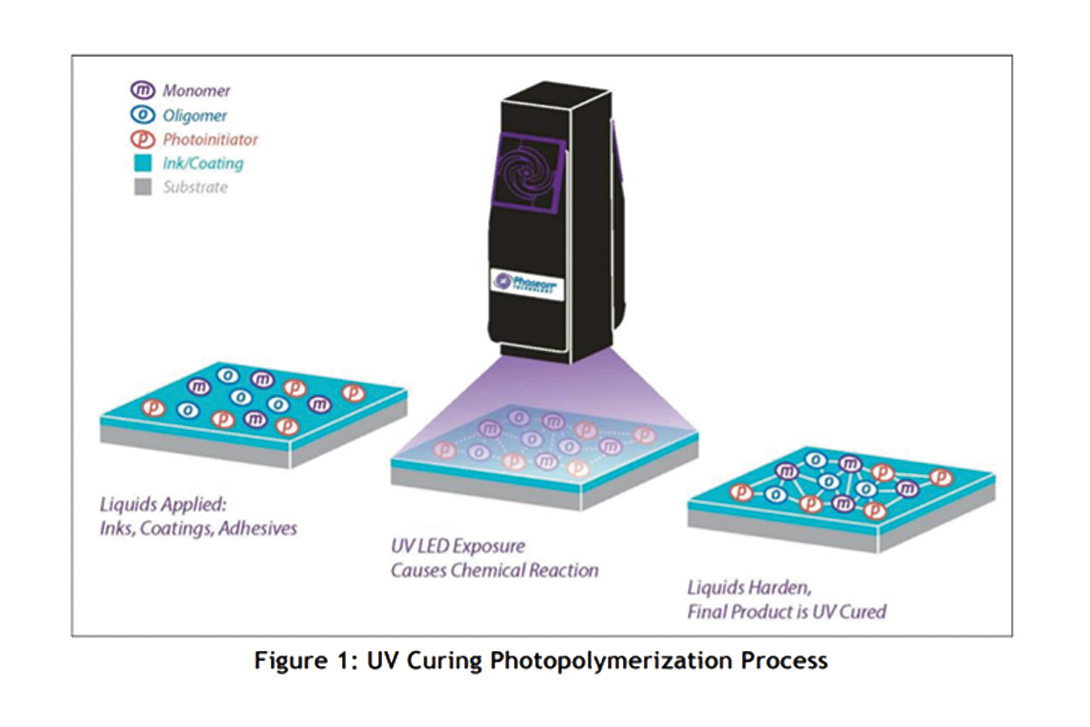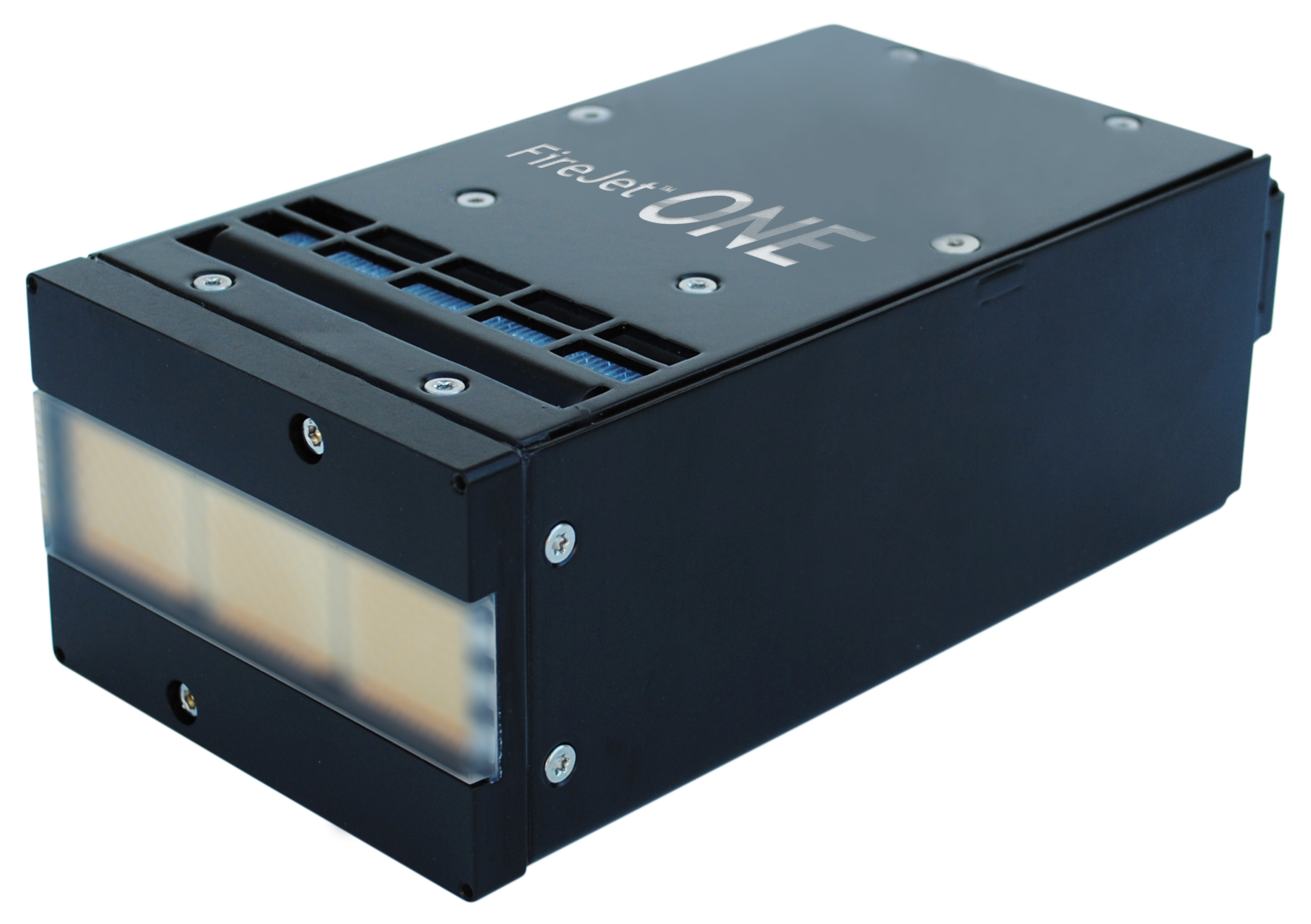
UV LED curing solutions are a great fit for manufacturing electronic components. Adhesives and coatings for high volume, industrial processes must maintain process control to meet rigorous end user demands. In some industries, compliance bodies require certain adhesive strength to ensure safety for electronic devices.
Electronics applications
UV LED curing technology is ideally suited for electronic assembly applications. The unique combination of high energy UV LED sources with the appropriate adhesive or coatings provides increased productivity, while also providing the ability to cure heat sensitive materials.
This includes for touch panel/LCD/OLED applications. UV LED curing technology for touch panel display manufacturing is an emerging application as it provides consistent stable output, no ‘hot’ spots, and low heat. Asia-pacific has emerged as the largest and the fastest growing regional market for touch panel manufacturing.
In mobile phones, UV LED curing is well suited for camera modules, camera lens, earpiece, microphone, and casings. The ability to provide consistent output, even during long-lasting, high volume jobs, when curing very sensitive products, makes UV LED technology an effective solution in these markets.
Assembly of micro-speakers also includes the use of light curable adhesives at multiple points, joining together parts which could be deformed and damaged by excessive heat. UV LED technology offers low temperature with high UV output to meet the challenge of increasing production speeds and improving yields.
UV LED technology can also be used for adhesive curing disk drive components such as read/write heads and stack heads assembly. UV LED curing offers better reliability, increased productivity, and improved yields for these types of applications.
UV LED curing technology:
UV LED curing solutions are being rapidly adopted for curing adhesives in factory assembly lines the world. Low operating costs, long lifetime, and low maintenance are just a few of the reasons. Additionally, small electronic components may be sensitive to heat; UV LED overcomes those issues by being a ‘cool’ light source.
UV LED curing for touchscreen manufacturing
UV LED curing technology provides a more consistent and reliable process without damaging or discoloring heat sensitive components. Product manufacturers, machine builders, and chemistry formulators will gain an understanding of the benefits and how to apply UV LED curing in manufacturing processes.
Ultraviolet (UV) curing is a photopolymerisation process that uses UV energy to change a liquid to a solid. Upon absorption of the UV energy, as shown in Figure 1 below, the photoinitiator (PI) produces free radicals which initiate cross-linking with binders (monomers and oligomers) in a polymerisation reaction to cure or solidify the ink, coating, or adhesive, usually in a few seconds.
 Touchscreens
Touchscreens
The touchscreen market continues to grow with uses in smartphones, tablets, eBook readers, mobile game consoles, and in car navigation systems. Asia-pacific is the largest and fastest growing regional market for touchscreen manufacturing.
A touchscreen display is an assembly of many different layers such as the liquid crystal display (LCD) or organic light emitting diode (OLED), glass, conductive and non-conductive layers, and a protective flexible layer. Each of these layers needs a liquid optically clear adhesive (LOCA) to provide a strong bond, a protective seal from moisture, and desirable optical properties while withstanding sunlight.
UV LED curable adhesive formulations are typically acrylic or epoxy cured at 365Nm, and deliver excellent optical properties such as light transmission, reduced reflections, anti fogging and impact and scratch resistance. They are easy to dispense and provide high flexibility without shrinkage or tension between layers, which could cause image distortion.
The manufacturers of LCD and OLED displays also use UV LED curing prior to assembly. The low heat and on demand curing using UV LED lamps is especially advantageous for preventing damage to sensitive components and delivering a consistent, high-speed process. One specific application is edge sealing of OLEDs, which uses an epoxy resin and spot curing UV LED system to deliver a precise and efficient cure that effectively seals out moisture.
UV LED curing offers many benefits to electronics manufacturing. Phoseon Technology says it provides three benefits to touchscreen manufacturing - improved yield, process stability and better adhesion. Yield, defined as the number of salable, good units as a percentage of total units produced, is critical in high volume manufacturing. Assuming a vendor can product 5,000 displays per hour, a 24/7 operation for 50 weeks could produce 42M displays on a line. A 0.1% yield increase from 98% to 98.1% would be worth 42K displays annually. At the competitive prices displays are offered, these extra 42K displays could provide significant profit margin to the vendor or allow them to gain market share from their competition.
Yield is improved with UV LED curing systems by providing consistent UV output over long periods of time. The image shows output from a UV LED lamp covering an area the size of a display screen. As shown, the display material receives a homogenous dose of UV energy consistently across the surface with no “hot” spots or “dead” spots which would lead to a rejects.
 The second benefit is process stability. UV LED systems provide stable output over long periods of time, typically greater than 20,000 hours. At the low power levels needed for display manufacturing, it is conceivable that the UV LED systems would last beyond 40,000 hours with the only maintenance being monthly checks of air filtration and ensuring the emitting window is clean. And as a reminder, this would be 40,000 hours of ‘on-time’. Being semiconductor devices, UV LED systems can be turned on and off instantly with no damage to the light source. No warm up or cool down period is required.
The second benefit is process stability. UV LED systems provide stable output over long periods of time, typically greater than 20,000 hours. At the low power levels needed for display manufacturing, it is conceivable that the UV LED systems would last beyond 40,000 hours with the only maintenance being monthly checks of air filtration and ensuring the emitting window is clean. And as a reminder, this would be 40,000 hours of ‘on-time’. Being semiconductor devices, UV LED systems can be turned on and off instantly with no damage to the light source. No warm up or cool down period is required.
The consistent output and long-life lead to process stability, a key requirement for high volume manufacturing. Knowing the equipment is producing the same UV output yesterday, today, and in the future allows the vendor to focus their resources on other parts of the manufacturing process. Process stability is further aided by the fact UV LED systems only produce output in the UV-A range, typically 365Nm to match with the acrylic adhesive being used.
Since no UV-C or infrared is being produced, the adhesive and surrounding transport are only receiving the amount of dose in the wavelength required. This UV LED ‘cold cure’ again improves process stability by not damaging the electronic components while the UV adhesive is being cured.
The third benefit is improved adhesion of the adhesive. Since UV LEDs provide energy in a narrow band, a wavelength optimised adhesive can be formulated to ensure deep through curing and attachment to display surfaces. The adhesive manufacturer can depend on UV LED’s consistent output at a specific wavelength to develop a formulation which is highly reactive to the UV energy and thus shorten the curing time. Future developments of UV adhesives may also mean less adhesive is use for each display screen leading to an additional cost savings to the manufacturer.
Conclusion
UV LED curing offers electronics manufacturers higher yield rates and productivity due to a consistent and stable process with less damage to heat sensitive components. UV LEDs require very little space making them easy to integrate into small spaces. Since UV LEDs produce no ozone emissions or hazardous waste concerns, they are the most environmentally friendly and safe UV curing technology available.
Electronics adhesive and coating suppliers have formulations available for use with UV LED curing which are easy to handle and apply in precision, high-speed processes so common in electronics manufacturing. Many electronic product manufacturers are already reaping the benefits of using UV LED curing to improve their manufacturing processes. Electronics manufacturers who need to improve their yield rates should consider UV LED curing technology.

Having spent a decade in the fastener industry experiencing every facet – from steel mills, fastener manufacturers, wholesalers, distributors, as well as machinery builders and plating + coating companies, Claire has developed an in-depth knowledge of all things fasteners.
Alongside visiting numerous companies, exhibitions and conferences around the world, Claire has also interviewed high profile figures – focusing on key topics impacting the sector and making sure readers stay up to date with the latest developments within the industry.





